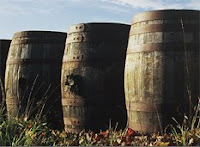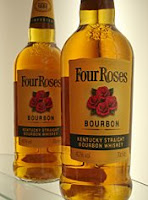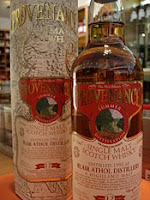 Lagavulin (pronounced lagga-voolin) is a distillery on the western Scottish island of Islay. The majority of distilleries on Islay produce rich, smoky and complex single malt whiskies and Lagavulin is renowned as giving some of the best examples of these. The distillery is located on the south eastern coast of the island and is very close neighbours with two other well known Islay distilleries - Ardbeg and Laphroaig. Lagavulin was founded in 1816 and currently has a production capacity of just under three million litres per year. They have unusual pear shaped stills and they believe that a combination of these stills, a slightly lower peating level in their malted barley and one of the longest spirit distillation times in Scotland, give Lagavulin its own unique character and quality.
Lagavulin (pronounced lagga-voolin) is a distillery on the western Scottish island of Islay. The majority of distilleries on Islay produce rich, smoky and complex single malt whiskies and Lagavulin is renowned as giving some of the best examples of these. The distillery is located on the south eastern coast of the island and is very close neighbours with two other well known Islay distilleries - Ardbeg and Laphroaig. Lagavulin was founded in 1816 and currently has a production capacity of just under three million litres per year. They have unusual pear shaped stills and they believe that a combination of these stills, a slightly lower peating level in their malted barley and one of the longest spirit distillation times in Scotland, give Lagavulin its own unique character and quality.Lagavulin release a very limited core range of three whiskies - a 12 years old cask strength, this 16 years old and a 'Distiller's Edition' (a special release that is finished in specially selected Pedro Ximenez sherry casks). This 16 years old forms part of the 'Classic Malts' series. Diageo, the current owners, have chosen one distillery from within their portfolio to represent each Scottish production region and highlight whiskies that typify the style of each of these six regions. Lagavulin is the 'Classic Malt' representative for Islay.
The colour is a gorgeous golden amber and the nose just blows your mind, making you want to try the whisky. It offers a sumptuous and complex mix of sweet peat smoke (think of dried earth and moss), a hint of woodiness, something meaty (think of old leather) and some dried fruit (imagine sultanas and a bit of candied peel). There is also some vanilla and a burnt, almost antiseptic quality (many people say lapsang souchong tea but it reminded me more of cloves). On the palate, this is creamy, smooth, rounded and full bodied. The initial massive blast of smokiness (cross between thick bonfire smoke with a meaty barbeque) then gives way to other flavours. There is a distinct herbal element (like dried grass or maybe moss again), some sweetness (a bit fruity but mostly vanilla I think), hints of something oily, a refreshing saltiness and a menthol quality. The finish is long and dry in comparison to the sweetness and saltiness elsewhere, with the powerful peaty smokiness (think of wood ash this time) dying away very very slowly, leaving you warm inside.
This is a truly fantastic example of a smoky Islay whisky. It is easy to see why it has such a following of whisky drinkers around the world and why Diageo chose Lagavulin to represent Islay in their 'Classic Malts' series. This 16 years old retails at around £40-45 and can be found in specialist retailers and some larger supermarkets. A true 'try before you die' single malt whisky and an essential addition to any whisky cabinet.


















